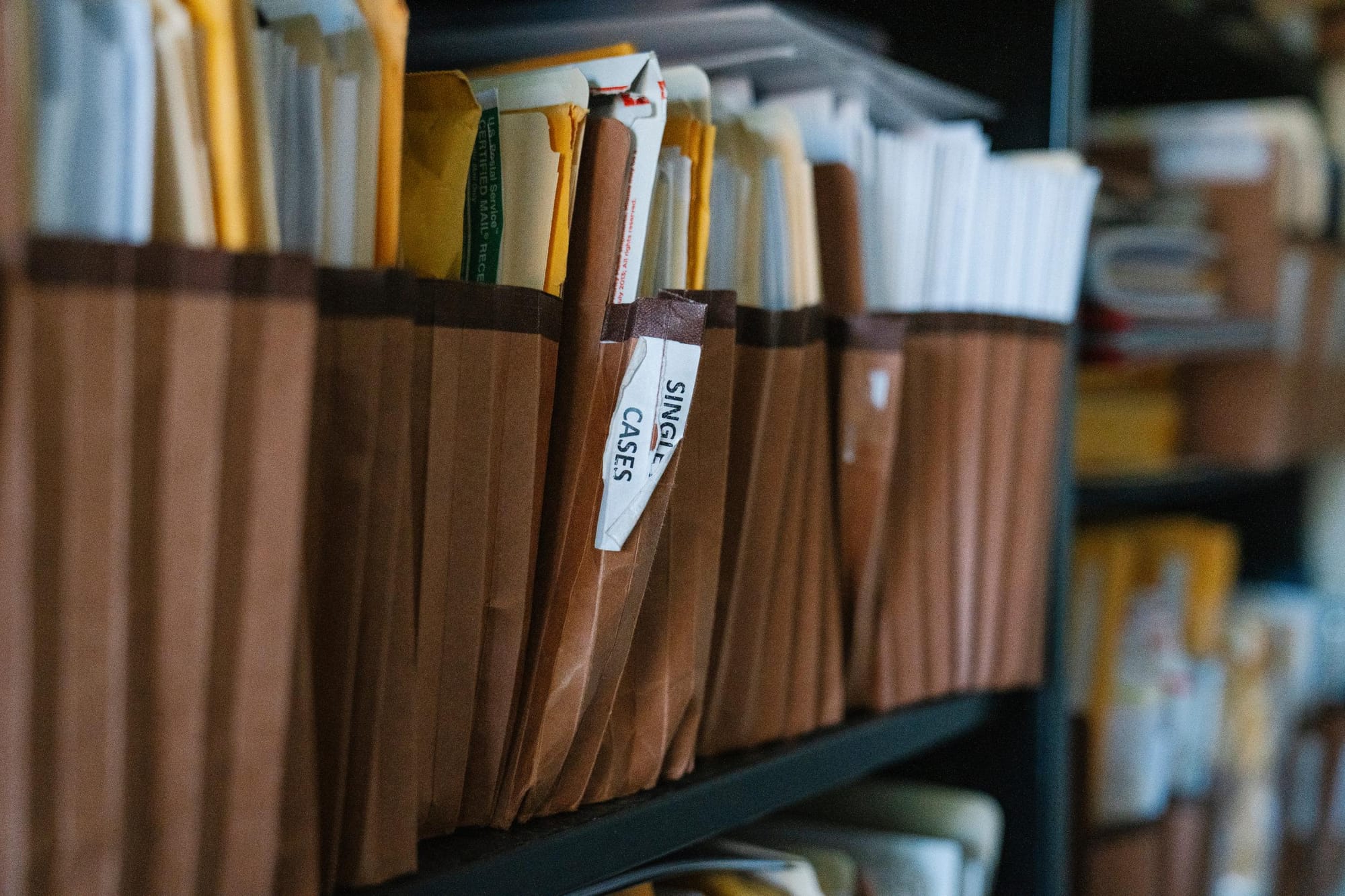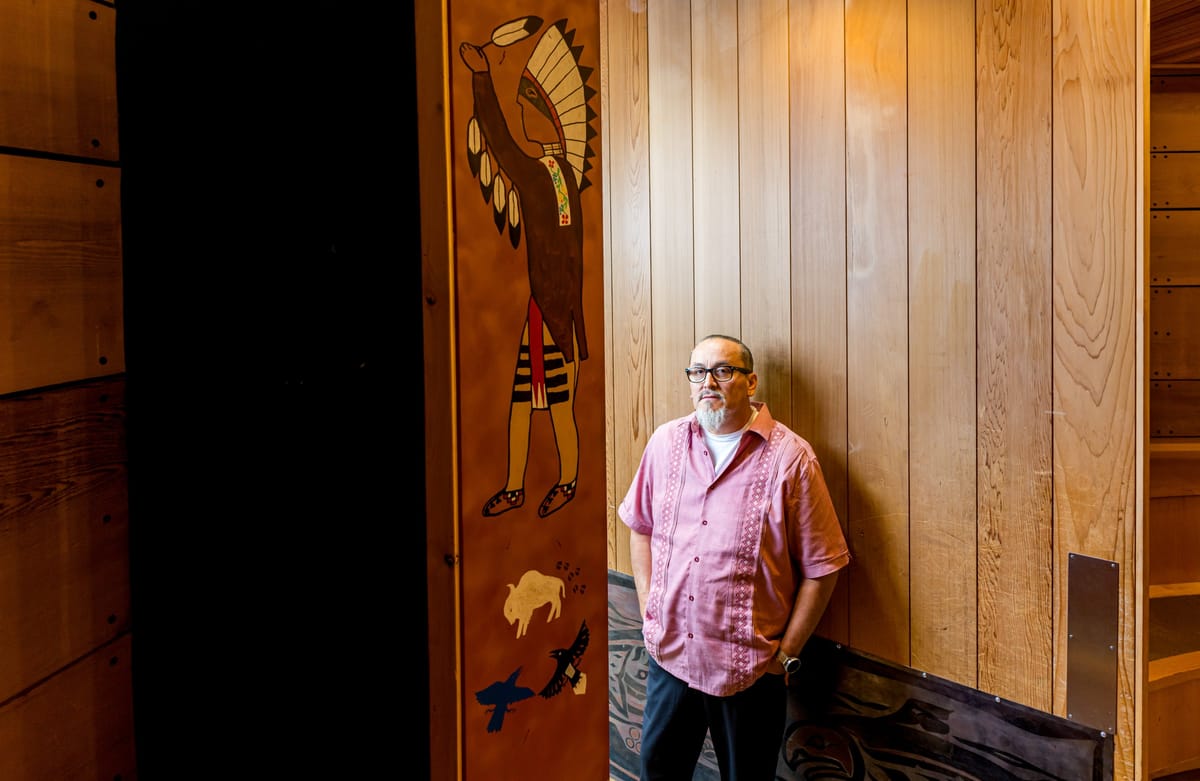Native American kids less likely than others in WA to be offered second chance in juvenile court, data shows
Lawmakers and researchers push for new tracking measures as racial disparities and decentralized practices shape youth justice outcomes
Lawmakers and researchers push for new tracking measures as racial disparities and decentralized practices shape youth justice outcomes

As a longtime Indigenous rights attorney, Gabe Galanda has seen it again and again. Native American kids find themselves accused of minor crimes, yet they’re given no off-ramp to avoid jail, and they become trapped in the juvenile justice system until they end up as adults in a Washington prison.
“It’s rinse-repeat,” Galanda says.
That’s why Galanda, a citizen of the Round Valley Indian Tribe, and other advocates for Native Americans, say it’s important for the state to provide alternatives to jail for those arrested at a young age.
Those alternatives, called diversion programs, can be agreed upon by prosecutors in each county, and they may involve sending youth to programs like anger management or therapy.
But in Washington, white children are much more likely to be offered these additional chances than Native American or Black children. A report released this year by the Washington Center for Court Research, a state-funded court research group, finds Native American and Black youths statewide are the least likely of their peers to be offered a path out of the justice system, while white children are most likely to be offered a break. And while chances of being offered diversion drops precipitously after the first offense for all races, that’s particularly true for Native American youths, who are the least likely to be offered diversion when they have two or more offenses, the report found.
While state law mandates that young people facing charges for their first low-level offenses and some felonies be offered alternatives, after that it’s largely up to prosecutors to decide. Youth of color are significantly more likely to face harsher charges which can exclude them from qualifying for diversion on their first offenses.
It’s for second and third offenses that researchers with the Washington Center for Court Research find racial disparities widen in Washington’s largest counties. In other words, Native American and Black kids are less likely to be offered diversion if the decision is left up to prosecutors.
Joshua Rovner, director of youth justice at The Sentencing Project, a research and prison reform advocacy group, called the research “really disheartening.”
“Because we know about the harm that the system does, especially as young people get deeper and deeper into the system,” Rovner says.
Nationwide, diversion programs are associated with lower recidivism and thus improved long-term outcomes, like attaining education and employment. Studies have shown that the longer youth remain in the system, the greater their risk of future involvement.
For those Native American and Black youths who haven’t been granted an off-ramp through a diversion program and are found guilty of a crime, they’re more likely to be confined to jail and spend more time there than white kids.
In some of Washington’s largest counties, the gaps are startling. In Pierce County, Native American youths charged with a misdemeanor who had a prior offense are 50% less likely to be diverted than white youths. Researchers found an even stronger correlation between race and outcomes for Black youths, according to the analysis by the Center for Court Research, called the Statewide Youth Diversion Report 2025.
Next year, King County is set to scrap most of its existing diversion programs that offer diversion before charges are officially filed in court. Currently, the county contracts with private nonprofits to offer diversion services to children and young adults, which is common in bigger counties with more expansive resources.
But after a report and separate audit released over the summer called the programs’ efficacy and financial practices into question. The umbrella nonprofit overseeing the programs, called Restorative Community Pathways, rebuked those concerns and has called on the county to change course away from folding its program. Should the proposed budget pass, new diversion programs would be put into place under stricter county control.
Advocates and researchers say a lack of oversight and tracking of outcomes for youths based on their race are undermining efforts to reduce racial disparities in the state’s criminal courts.
“It comes down to that initial question of well, either race and ethnicity is either informing the diversion decision or there’s a bunch of stuff that we don’t know,” said Karl Jones, the Center for Court Research’s equity senior research associate who helped author the 2025 report.

Native American youths are overrepresented at every stage in the criminal justice system, according to the state’s own 2023 data, with disparities worsening the deeper into the criminal legal system a child goes. Native American children are more likely to be arrested, detained, placed in secure confinement and have their cases transferred to adult court than their white peers — but less likely to be provided diversion opportunities that could lower their likelihood of reoffending.
Diversion programs are designed to break that cycle by focusing on a young person’s underlying needs, such as mental health, housing instability and trauma.
Advocates for Indigenous people say the impact of colonization and state violence on their communities has destroyed Indigenous kinship units, leading to significant trauma, which research shows can be a significant driver of delinquency among Native American youth.
When a court doesn’t offer a young person an alternative path, it not only makes it more likely that they will re-offend, but puts them at a much higher risk of premature death due to suicide and substance abuse, Galanda said.
“There is an absolute correlation between the failure to divert Indigenous youth on the front end and placing them into a pipeline into some mode of recidivism and incarceration, and ultimately premature death, either by suicide or some other affliction,” he said.
Every Friday night in Seattle around 8 pm, a roomful of children gathers for a weekly therapy session dubbed “the healing circle,” hosted by Restorative Community Pathways. The session is intended to be a space where the teens and preteens — all accused of crimes and offered a way out of the legal system through the group’s programs — can process their experiences and share their feelings with peers and support from the organization. Many of the group’s clients, like those in other diversion programs, are struggling with difficulties in their families, hunger or homelessness.
One of the tasks during the healing circle is “write a thought, share a thought,” where the kids share what’s been on their minds that week.
One boy spoke aloud to the group: “What if everything went right, instead of wrong?”
As it often does, the conversation moves to the week’s difficulties, how the children navigated them and how they can approach them better in the future.
In Pierce and King counties, Restorative Community Pathways programs are offered to children accused of crimes for diversion and separately for children who are victims of a crime, which can make a person more likely to commit a crime later on.
Washington has a nonunified court system in which each of the state’s 39 counties manages its own juvenile diversion process — so there’s no uniform reporting or eligibility requirements beyond the initial mandate to refer first-time nonviolent offenders, and no obligation to refer youths to specific community-based programs.

That means access to diversion is not only limited but uneven, varying widely by county and shaped by the subjective judgment of prosecutors. Without good data on the outcomes of diversion programs, it’s hard for researchers to determine what is most effective in improving outcomes for a child, and who exactly is being offered diversion options outside the court system.
The 2025 report on statewide diversion stops short of attributing racial disparities to bias, urging more research at the county level. However, the report does say there is “very strong” evidence that race and ethnicity influenced formal diversion decisions for Native American youths in Pierce County, “moderately strong” evidence of the same in Spokane County and “extreme” evidence for Black youths in Pierce and King counties.
For Native Americans and those who work with them, the news that there may be racial bias, intentional or not, at play in Washington’s court system is no surprise. “In rural Washington, there’s certainly prejudice in prosecutors’ offices,” Galanda said.
The researchers stress, however, that more research would be needed to definitively prove racial bias. The reason the disparities exist is currently a “black box,” according to Amanda Gilman, principal research associate for the research center and co-author of the 2025 report.
A lack of dedicated state funding for jail alternatives also means counties must cobble together funds for their diversion programs from a variety of sources.

In the state’s population centers, counties partner with community-based organizations to provide culturally responsive or trauma-informed diversion services, like mentorship programs, tribal healing circles, and restorative justice practices that focus on repairing harm and reintegrating youth into their communities.
Allie Steinberg is the diversion workshop coordinator for CHOOSE 180, a nonprofit organization that offers diversion services to young adults in Seattle before charges are filed in court, giving them an opportunity to avoid the justice system altogether for offenses like theft, shoplifting, obstruction of justice or minor assaults.
“They really are just looking for support, connection and a lot of people are getting into stuff because they don’t have that,” Steinberg said.
Steinberg added that many of CHOOSE 180’s clients struggle with addiction, food and housing insecurity.
The movement to divert more children away from courts and incarceration hasn’t been without difficulties.
Twice this year, unfavorable reports cast doubts on the effectiveness and operations of some of King County’s diversion programs. One report showed high rates of reoffending among some children offered diversion through Restorative Community Pathways, and the other showed improper payments to contractors and potential fraud among diversion providers, including Restorative Community Pathways. The group said in a letter that the audit improperly commingled findings that insinuated financial impropriety, and that it submitted a corrective action plan.

If the county’s current proposed budget passes for 2026-2027 fiscal year, it stands to lose the majority of its funding, around $1.6 million, and would cease operations and lose its staff, including community navigator positions. Diversion programs offered before charges are officially filed in court would be transitioned into a program operated by the King County Department of Community and Human Services and new partner organizations selected in an application process.
The state doesn’t track prefiling diversion programs or their outcomes nor is there a statewide definition or consensus on how these problems should be run or their successes measured.
Equitable diversion access also depends on community support, like transportation to programs and family engagement. In rural or under-resourced counties, program availability is often limited. Rural counties often lack the capacity to offer informal diversion programs and rely primarily on probation-driven models, where little to no therapy or mental health support is present. For example, Skamania County in southern Washington, with a population of 12,000, relies on two probation officers to make diversion agreements and a single mental health counselor to serve the county’s youth.
The Juvenile Rehabilitation Administration, a department within the Department of Children Youth & Families with a more than $154 million budget for youth diversion and rehabilitation services, set aside nearly $18 million in fiscal year 2025 in block grants to fund county court services, probation and other post-release programs. The state recently rewrote the requirements for the block grants to also cover youth diversion programs, but that didn’t come with an increase in dollars.
“Their mandate was expanded so that they can serve diverted youth with the funding they receive, but there was no increase in funding to account for an expanded population of youth that might be eligible for their services,” said Elizabeth Trautman, the executive director of Stand for Children, a child advocacy group based in Washington, who also helped author the diversion report.
Better coordination between tribal and state governments could also help connect Native American youth to important resources, Trautman said.
Some Indigenous youths are involved in both tribal and state legal systems, and not all counties have diversion programs that are equipped to provide culturally appropriate services. A number of tribal-led programs, like wellness courts, have been developed by individual tribal governments to integrate Indigenous traditions and practices into restorative justice, but several of them have been hobbled or suspended due to a lack of funding, a longstanding issue in tribal court systems due to a lack of adequate federal funds. Tribally operated programs are not available statewide and are often unutilized in cases that remain in the state court system.
In Grays Harbor County, for example, prosecutors work with local tribal wellness courts to provide pathways away from jail, but there’s no statewide program or guidelines to promote similar collaborations between local county governments and Native American nations.
“It’s not just about funding court staff, but funding partnerships with communities so that young people are building long-term relationships with community organizations and community leaders,” Trautman said.
Some private organizations and nonprofits are trying to fill the gaps with programs that get Native American youths more deeply involved in their community.
Natalie Welch, executive director of the nonprofit RiseAbove, which aims to uplift Native American children, says providing kids with responsibilities and opportunities to grow after they’ve engaged with the legal system can help prevent future involvement.
One 16-year-old boy who was charged with underage drinking was assigned through the program to oversee a community clinic for other youths, where he was responsible for accounting for younger students before field trips.
“Instead of approaching it from ‘Oh, how do we punish them?’ It’s actually like, we’re going to give them a responsibility, and tell them ‘this is the kind of stuff you can be a part of if you stay out of trouble,’” added Welch, who’s a citizen of the Eastern Band of Cherokee Indians.
The state’s diversion system is the least studied component of the criminal legal system, according to researchers at Washington Center for Court Research and Washington’s child welfare agency.
In its 2025 session, the Washington Legislature took one step toward increasing transparency into juvenile diversion programs by passing House Bill 1391, requiring the state to define and track not only formal diversion efforts, but also informal agreements between prosecutors and youth that aren’t captured in existing data.
Informal diversion in Washington has existed in a blind spot — cases that were resolved without a formal contract have largely gone uncounted, making it impossible to measure how often diversion is truly used. What qualifies as “informal” diversion in one county may not even be recognized in another, and without state-level tracking, no one can say with confidence exactly who is offered these opportunities, how often or how effective the programs are.
“There’s a lot we don’t know about local practices,” said Jones, the Washington Center for Court Research researcher.
Formal diversion typically involves a written agreement between a child and the court or prosecutor, which often requires the child to complete specific conditions like pay restitution or complete community service, counseling or anger management classes. If they fulfill the agreement, the case is closed without formal charges on their criminal record.
Informal diversion, by contrast, occurs outside the court system, and can include everything from a verbal warning from law enforcement to a referral to a school counselor or enrollment in a community program. In Pierce County, prosecutors send out “knock it off” letters to youths accused of a crime, warning of official prosecution for further violations — but these letters don’t appear in official court records and aren’t tracked by the state.
These interactions might never appear in court records and are not tracked consistently across the state, which the new law aims to help address.
“By the time it reaches the point where they are referred to juvenile court, they actually have had a lot of involvement in the court that’s not going to be reflected in the official record,” said Gilman with the research center.
As Washington begins to implement the new law, supporters say it offers an opportunity to bring greater consistency, accountability and equity to the state’s juvenile diversion efforts. By establishing common definitions and improving data collection, the state may be better positioned to evaluate the effectiveness of existing programs and identify where gaps remain, according to the Washington Center for Court Research.
At the same time, advocacy groups remain wary of formalizing all diversion programs. They say offering incarceration alternatives before a young person is formally charged avoids creating documentation that may follow them later in life.
“I’ve had lots of young people say jobs have turned me away even if I give a full explanation, or even if it’s dismissed,” said Steinberg, the diversion program coordinator for CHOOSE180. “So I think being able to offer the prefiling option is really amazing just to allow them that kind of clean slate in terms of their criminal court record.”
Striking that balance is the job of Lindsey Beach, who studies juvenile diversion in Washington for the Center for Court Research. The new law provided funding to the research center to create Beach’s position, and Beach says her goal is to begin filling gaps in diversion data while being sensitive to privacy concerns.
“What we hear from courts is they want this informality to exist so there aren’t these additional records that are being created that might stigmatize youth,” Beach said. “We take that super seriously, and we’re kind of building the system as we go — but with that, we can build in a lot of responsiveness to those concerns.”
Trautman, who also serves on the Washington Minority and Justice Commission Youth Justice Committee, said the biases and inequities revealed by the report shows the need for deeper research.
“It is disappointing and not entirely surprising that we would see disparities because we know that our system doesn’t have equal treatment of young people by race and ethnicity,” she said.
For his part, Galanda says he’s not arguing that all children should be offered a chance at diversion, but that the consequences of incarceration are severe, and that Indigenous youth entering the criminal legal system deserve the same opportunities for a second chance as their white peers.
“We have to stop throwing away generations,” Galanda said. “Until those chances are given, first or second, we will continue this cycle of brokenness, and trauma, and addiction, and incarceration and other afflictions.”
The story you just read is only possible because readers like you support our mission to uncover truths that matter. If you value this reporting, help us continue producing high-impact investigations that drive real-world change. Your donation today ensures we can keep asking tough questions and bringing critical issues to light. Join us — because fearless, independent journalism depends on you!
— Jacob H. Fries, executive director
DonateCancel anytime.
Subscribe to our weekly newsletters and never miss an investigation.
From now until Dec. 31, NewsMatch and a generous local donor will each match community donations, matching your new monthly donation 12 times or TRIPLE your new one-time gift, all up to $1,000.
Cancel anytime.